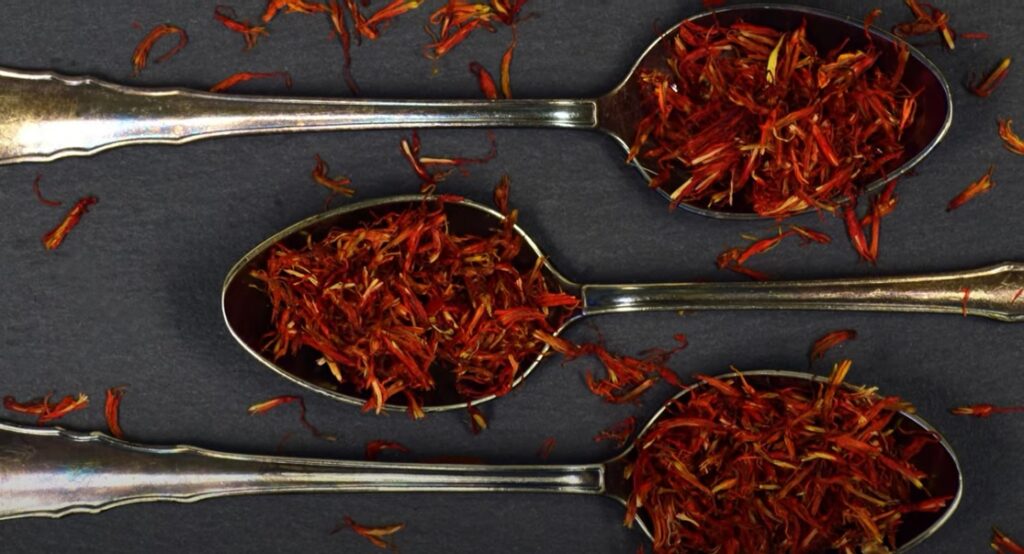Saffron: History and Ways to Use

Saffron, known as the “golden spice,” is one of the most precious and expensive spices in the world. It has a rich history that dates back thousands of years and is renowned for its distinct flavor, vibrant color, and numerous health benefits. In this article, we will explore the fascinating history of saffron and discover the various ways to use it in culinary and medicinal practices.
A Brief History of Saffron:
Saffron has a long and storied history that can be traced back to ancient times. It is believed to have originated in the region encompassing modern-day Iran and has been cultivated for over 3,000 years. Saffron was highly prized by ancient civilizations, including the Greeks, Egyptians, and Romans, who used it for culinary purposes, medicinal remedies, and as a dye for textiles.
During the Middle Ages, saffron became a valuable commodity in trade between the East and the West. It was sought after by merchants and was often used as a form of currency. Saffron played a significant role in the economy and cultural practices of regions such as Persia, India, and Spain.
The Production and Harvesting of Saffron:
Saffron is derived from the dried stigma of the Crocus sativus flower. The process of harvesting saffron is labor-intensive and requires delicate handling to ensure the quality of the spice. Each flower produces only three stigma, which must be carefully hand-picked and dried to preserve their flavor and aroma.
The majority of saffron production occurs in Iran, followed by countries such as Spain, India, Greece, and Morocco. The unique climate and soil conditions of these regions contribute to the cultivation of high-quality saffron.
Culinary Uses of Saffron:
Saffron is known for its distinct flavor and vibrant color, making it a prized ingredient in various culinary traditions around the world. Here are some popular ways to use saffron in cooking:
1. Rice and Grain Dishes: Saffron is often used to add flavor and color to rice dishes such as biryani, paella, and risotto. It infuses the grains with a subtle floral aroma and imparts a beautiful golden hue.
2. Soups and Stews: Saffron can enhance the flavor of soups and stews, such as bouillabaisse, by adding a unique earthy and slightly sweet taste.
3. Desserts and Baked Goods: Saffron is a common ingredient in traditional desserts like Indian kheer, Middle Eastern baklava, and Swedish saffron buns. It lends a delicate floral note and a warm golden color to these sweet treats.
4. Beverages: Saffron can be used to flavor hot beverages like saffron-infused tea or added to cocktails for a unique twist.
Medicinal and Health Benefits of Saffron:
Saffron not only adds flavor and color to dishes but also offers several health benefits. It contains various bioactive compounds that have been studied for their medicinal properties. Some of the potential health benefits of saffron include:
1. Antioxidant Properties: Saffron is rich in antioxidants that help protect the body against oxidative stress and damage caused by free radicals.
2. Mood Enhancement: Saffron has been traditionally used for its mood-enhancing properties. Studies suggest that it may help alleviate symptoms of mild to moderate depression and promote feelings of relaxation and well-being.
3. Anti-Inflammatory Effects: Compounds found in saffron have shown anti-inflammatory properties, which may help reduce inflammation and associated health conditions.
4. Improved Cognitive Function: Saffron has been studied for its potential benefits in improving memory, cognition, and learning ability. It is believed to have positive effects on brain health and may help protect against age-related cognitive decline.
5. Digestive Health: Saffron has been used in traditional medicine to aid digestion and alleviate symptoms of digestive disorders. It may help reduce inflammation in the digestive tract and promote healthy digestion.
Tips for Using Saffron:
To make the most of saffron’s flavor and color, consider the following tips:
1. Soaking Saffron: Before using saffron in a recipe, it is best to soak the threads in a small amount of warm liquid such as water, milk, or broth. This helps release the flavor and color compounds from the threads.
2. Moderation is Key: Saffron has a strong flavor, so it should be used sparingly to avoid overpowering the dish. A little goes a long way, and even a few threads can add a distinct taste and color to a recipe.
3. Quality Matters: Choose high-quality saffron threads that are vibrant red in color and have a strong aroma. It is worth investing in premium saffron for the best flavor and color results.
4. Storage: To maintain the freshness of saffron, store it in an airtight container in a cool, dark place away from moisture and sunlight. Proper storage helps preserve its flavor and quality.
5. Experiment with Combinations: Saffron pairs well with a range of ingredients, including rice, seafood, chicken, and vegetables. Explore different flavor combinations to create unique and delicious dishes.
6. Culinary Versatility: Don’t limit saffron to traditional recipes. Get creative and experiment with using saffron in unexpected ways, such as in sauces, dressings, or even in infused oils.
Saffron is a treasured spice with a long and illustrious history. Its unique flavor, vibrant color, and potential health benefits make it a sought-after ingredient in various cuisines. From enhancing rice dishes to adding a touch of luxury to desserts, saffron brings an unparalleled depth and complexity to recipes. Whether you’re exploring traditional dishes or experimenting with innovative combinations, saffron is sure to elevate your culinary creations and provide a delightful sensory experience. Embrace the golden spice and savor its rich history and versatile applications in the world of cuisine.